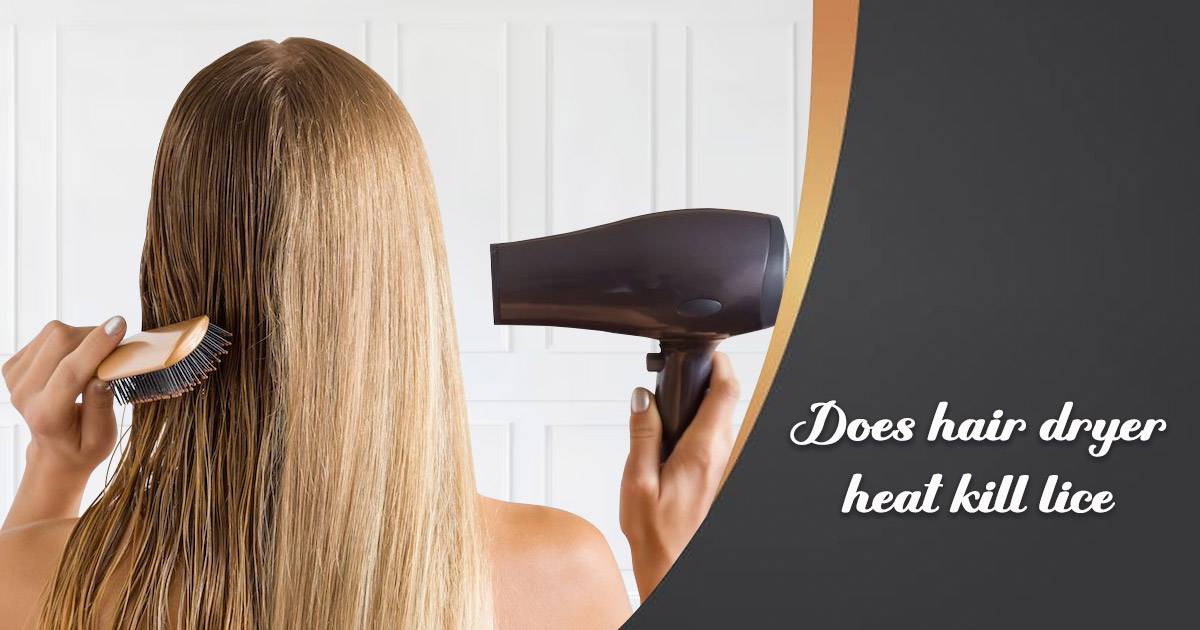Can a Hair Dryer’s Heat Eliminate Lice? Other Options to Consider

Dealing with lice infestations can be a frustrating experience, prompting many to seek alternative treatments like using a hair dryer to tackle these persistent pests. But does the heat from a hair dryer really eliminate lice effectively? Let’s delve into the science behind this method and explore other effective treatments.
Can Heat from a Blow-Dryer Kill Lice?
Using a blow dryer on high heat is often suggested as a home remedy for lice infestations. Research indicates that the heat from a blow dryer can indeed be effective in killing lice and their eggs. Lice and their eggs, known as nits, are sensitive to high temperatures. For instance, exposing them to temperatures above 130°F (54.4°C) can lead to their dehydration and death.
However, it’s crucial to ensure that the heat is applied evenly and for an adequate duration to achieve this effect. Typically, experts recommend using the blow dryer on high heat for at least 30 minutes to effectively kill lice and nits. This method can be particularly useful for those who prefer non-chemical treatments or as a supplementary measure alongside other treatments.
Does Blow-Drying Your Hair Kill Lice Eggs?
When it comes to lice eggs, or nits, the effectiveness of blow drying depends on how well the heat penetrates and maintains the required temperature. Nits are attached firmly to hair shafts and can be more resilient than adult lice. While blow drying can help in loosening nits from the hair, it may not always guarantee complete removal or destruction of all eggs.
To enhance effectiveness, it’s recommended to combine blow drying with meticulous nit combing using a fine-toothed comb to physically remove any remaining nits from the hair shafts.
Can Heat Kill Lice?
Heat, whether from a blow dryer or other sources like hot water or heated air devices, can be an effective method to kill lice. The key is to ensure the heat reaches the required temperature consistently and is applied for a sufficient duration. Apart from blow drying, other heat-based methods like washing bedding and clothing in hot water and then drying them on high heat settings can also help in eliminating lice and preventing re-infestation.
Effective Treatments to Kill Lice
When faced with a lice infestation, exploring various treatment options beyond heat is crucial. Understanding the effectiveness of different methods can help in choosing the most suitable approach for eliminating these persistent pests.
Over-the-Counter (OTC) Treatments:
Over-the-counter lice treatments are often the first line of defense. Products containing permethrin or pyrethrin are widely used due to their ability to effectively kill lice. These ingredients work by disrupting the lice’s nervous system, leading to their paralysis and eventual death. They are available in various forms, including shampoos, creams, and sprays, and can be applied directly to the scalp according to package instructions.
Prescription Medications:
In cases where over-the-counter treatments prove ineffective, healthcare providers may recommend prescription medications. These include stronger formulations such as malathion or benzyl alcohol, which are capable of killing both lice and their eggs (nits). Prescription treatments are usually reserved for more stubborn infestations or cases where resistance to OTC products is suspected. It’s essential to follow the healthcare provider’s instructions carefully when using these medications.
Wet-Combing:
Wet-combing, also known as combing with a fine-toothed comb, remains a valuable method for physically removing lice and nits from the hair shafts. This technique involves saturating the hair with a conditioner or a specialized combing solution to immobilize the lice and make it easier to slide the comb through the hair. Regular and thorough combing sessions are necessary to ensure all lice and nits are removed, reducing the risk of re-infestation.
Smothering Lice:
Natural remedies like smothering lice with substances such as mayonnaise, olive oil, or coconut oil have been suggested as alternative treatments. These substances are believed to suffocate lice by clogging their breathing openings (spiracles). However, scientific evidence supporting their effectiveness is limited and varies. While some individuals may find relief with these methods, they are generally not recommended as standalone treatments and should be used cautiously.
When to Contact a Doctor
While many cases of lice infestations can be managed effectively at home, certain situations warrant seeking medical advice or intervention to ensure proper treatment and management.
Persistent Infestations:
If lice persist despite repeated use of over-the-counter treatments or alternative remedies, consulting a healthcare provider is advisable. They can assess the situation and recommend stronger prescription treatments that may be more effective in eliminating the infestation. Healthcare providers can also provide guidance on proper application techniques and follow-up care to prevent re-infestation.
Allergic Reactions:
Some individuals may develop allergic reactions to lice bites, resulting in symptoms such as severe itching, rash, or swelling. In such cases, medical attention should be sought promptly to manage symptoms and prevent complications. Healthcare providers may prescribe medications to alleviate itching and inflammation, as well as recommend measures to avoid further exposure to lice.
Secondary Infections:
Continuous scratching due to lice bites can lead to secondary skin infections, particularly in cases of broken skin or open wounds. These infections may require medical treatment, including antibiotics or topical medications to prevent further complications. If signs of infection such as increased redness, warmth, or pus are observed, consulting a healthcare provider is essential for proper diagnosis and treatment.
Discovering Effective Ways to Manage Lice Infestations
Managing lice infestations involves understanding the effectiveness of various treatments, including using heat from blow dryers as a potential remedy. By combining scientific insights with practical tips, individuals can make informed decisions on how to best address lice infestations at home.
